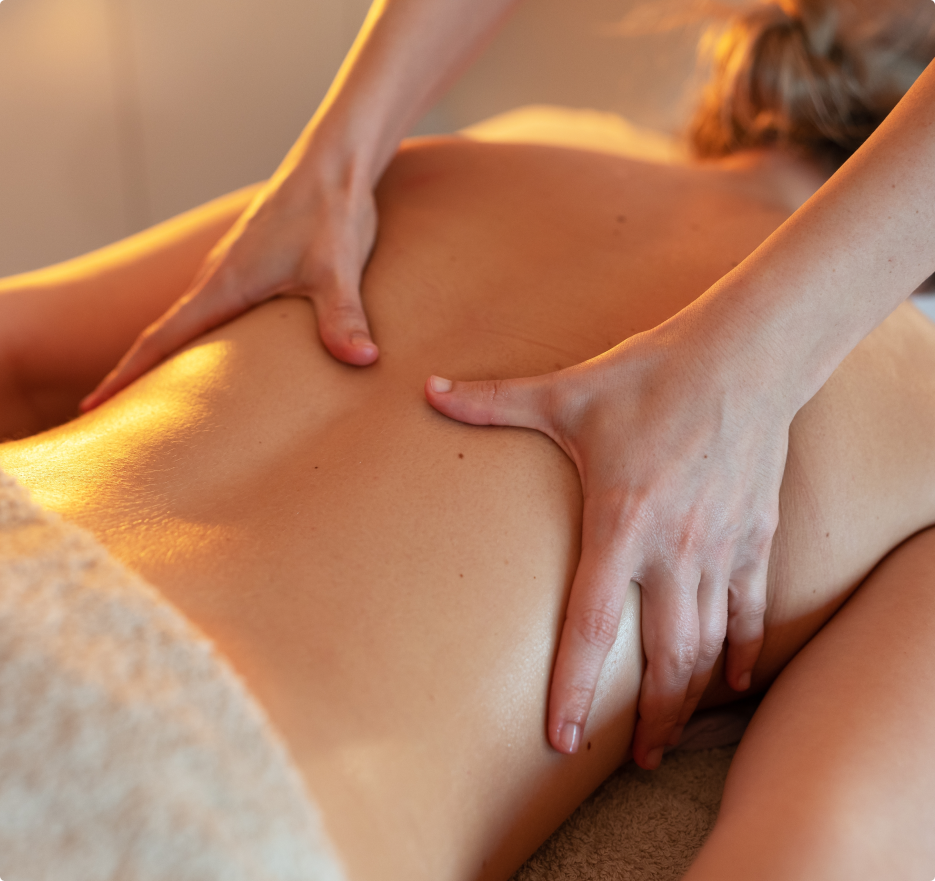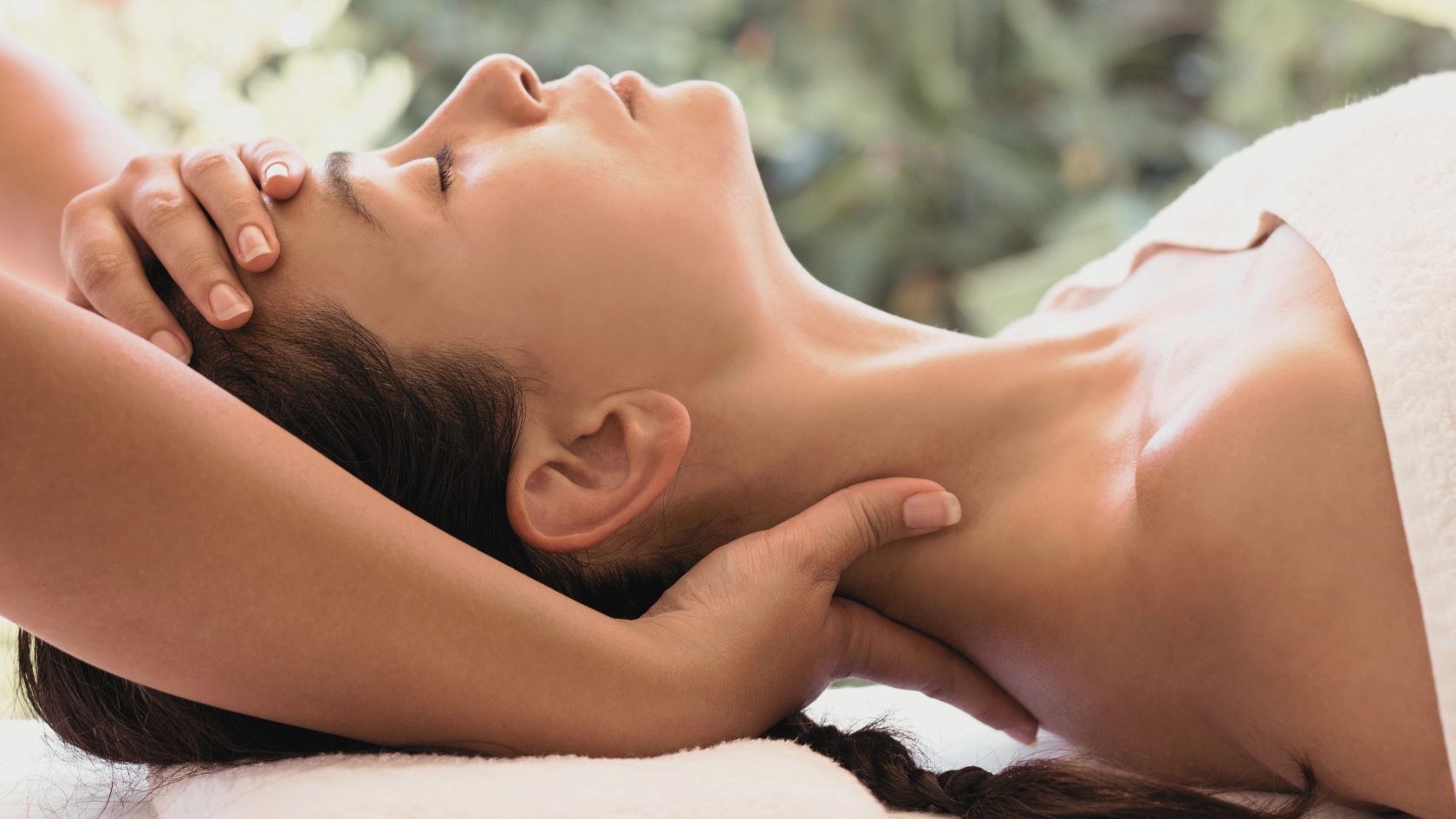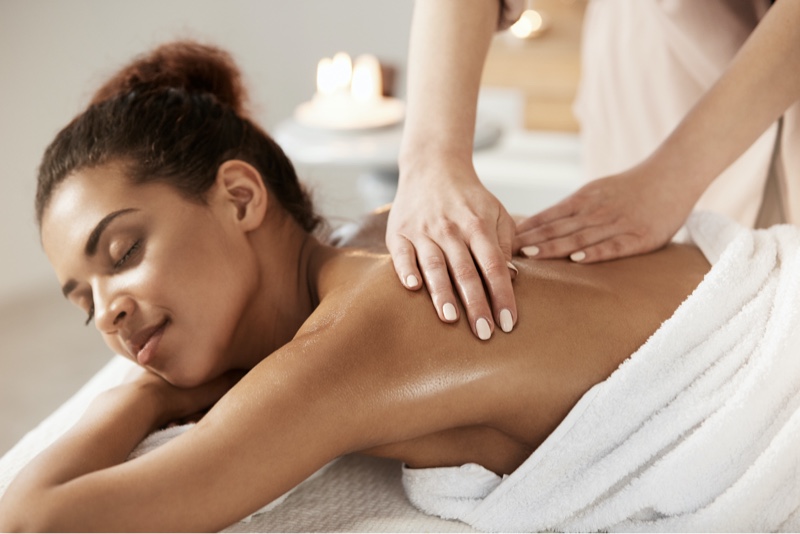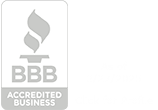There are many different techniques used throughout the world for massage therapy. If you’ve had a massage before, chances are you’ve already experienced techniques used in Swedish massage. One of the things we love about Swedish massage is the ultra-relaxing effect this technique produces. The Swedish massage is designed to relax the entire body and has many benefits for the body and mind. When you book a massage through Soothe, you can select this type of massage and also chat with your provider about its many benefits.
What Is Swedish Massage?
The Swedish massage is one of the most common and widely used massage types in the world. If you’re planning your first massage, a Swedish massage is a great place to start. The Swedish body massage uses a combination of different massage techniques implemented into a single session to relax and soothe away stress.
During your Swedish massage therapy session, the therapist will use their hands to work with your soft tissues and muscles – usually using long, gliding strokes and circular motions. This may help relax your muscles, releasing pain and discomfort from the built-up tension you’ve been experiencing.
If you feel overworked, stressed, or have tense muscles, a Swedish massage may be a great way to begin reviving your body and mind. Since this massage is well known for relieving muscle tension, Swedish therapy can be both relaxing and rejuvenating.

Swedish Massage Techniques
Effleurage: Effleurage is used to start your massage, it helps the muscles warm-up. It’s also used to soothe your muscles at the end of your massage. This technique includes gentle gliding and circular strokes. The massage therapist applies different pressure levels on the body, which loosens knots in your muscles and relieves tension. In total, there are three classes of effleurage – each one is based on the amount of pressure that is used during the massage. These classes include feather stroking, superficial effleurage, and deeper effleurage. The degree of pressure applied depends on your specific needs and wants.
Petrissage: This technique includes a kneading movement. It involves deep penetration into the muscles. The massage therapist will usually compress your soft tissues in a rhythmic fashion. The most common ways of performing petrissage include kneading, wringing, rolling, and lifting. This will help the muscles stretch and loosen. This also may help improve blood circulation in those areas, which can relieve pain and help you feel renewed. Petrissage is a massage technique that can take time. While anyone can benefit from this technique, It’s often recommended for people with injured muscles since it provides therapeutic benefits.
Friction: This technique involves rubbing on the massage area using the thumbs or fingers. The massage therapist may apply pressure in a circular area or linear, and this rubbing can soften and realign your muscles. This technique is great for those of you who may have joint pain or struggle to move your joints.
Vibration: This technique involves rhythmic shaking of the area being massaged. This will loosen up your body and help your muscles relax. It’s possible your massage therapist may use their palms to shake the skin and muscles on your back. They may use their fingers if the massage area is small or sensitive, like your face. Vibration works best for soothing nerves in areas with large scars or knots.
Tapotement: Drumming or tapping is what tapotement refers to. The massage therapist will use rhythmic tapping to stimulate blood flow across the body. Tapotement involves actions like hammering, slapping, cupping, hacking, and tapping. Tapotement promotes the production of endorphins, which help the body relax. This technique relaxes tight muscles and helps in lymphatic drainage.
What Happens During The Swedish Massage?
While all massage therapists have their own personal ways of giving a massage, there are a few general processes that you’ll experience during a Swedish massage. First, the therapist will lubricate your skin with massage oil or lotion to create a smoother, more comfortable experience as they apply pressure. Your therapist will perform various massage strokes. In a Swedish massage, the strokes are generally long, gliding motions, with some circular movements, generally in the direction of blood flow towards your heart. These movements allow muscle tissue to warm up. This helps release tension and breaks up muscle “knots,” also known as adhesions.
To get the best massage experience, Soothe always encourages good client-therapist communication. Before the massage is performed, the therapist will likely ask you about any injuries or other conditions that he or she should know about. Be sure to speak up and tell the massage therapist exactly how you feel. For example, you want to be sure to tell them what areas are hurting, painful, or tense. If you have allergies or are pregnant, be sure to inform them.
You should also tell the massage therapist your preference for pressure, which may be light, moderate, or firm. The therapist will likely ask a series of questions to ensure you have the best experience possible. That’s why communication is so important. Soothe wants to make sure to meet all of your expectations. If you let your massage therapist know exactly what you want, he or she can make sure they deliver on that promise.

Origins Of The Swedish Massage
The Swedish massage has an interesting history. In fact, Swedish massage and physical therapy were pioneered by a Swedish physiologist at the University of Stockholm in the early 1800s. His name was Per Henrik Ling.
In the early 19th century, he developed a system called “Medical Gymnastics,” which included movements performed by a therapist. These later became known as “Swedish movements” in Europe and “The Swedish Movement Cure” when they eventually came to the U.S. in 1858. Today, it’s widely known as the Swedish massage.
Another interesting fact: Swedish massage is often used as a foundation massage for other types of Western massage, including sports massage, deep tissue massage, aromatherapy massage, and full body massage.
Health Benefits
Countless studies and research explain the health benefits of a Swedish massage. One benefit of receiving a Swedish massage is that the technique can help stimulate your lymph system. The function of your lymph system is to circulate nutrient-filled fluids and waste around your body. When your muscles relax, these fluids can move freely around the body. This process also helps increase blood flow and circulation throughout the body.
If you have problems with muscular strain, you may benefit from the Swedish massage. As the therapist works on relaxing your muscles, this can allow your lymph system to flush out the metabolic waste from the muscles, promoting faster healing.
The Swedish massage may also be used as therapy for people who suffer from types of debilitating joint disorders that are painful. This type of massage can help increase the elasticity in the tissues, improve flexibility, and can help reduce pain. A study conducted by Hernandez-Reif, M., Field, T., Krasnegor, J., Theakston, H., Hossain, Z., and Burman, I. reported in the Journal of Bodywork and Movement Therapies in the year 2000, explains that hypertension and its associated symptoms were reduced through massage therapy.
Swedish Massage is the best-known massage type for relaxation, one of the main reasons many men and women use it for stress relief. The massage therapist may use oil or lotion and combine long, gliding, and kneading strokes over the topmost layers of muscles. Pressure varies from light moderate, and firm. Often combined with manipulation and stretching of your arms and legs, Swedish massage relieves muscle tension, improves circulation, increases energy, and can help you heal after an injury.
One study found that a single session of Swedish massage resulted in a significant decrease in the hormone arginine-vasopressin, which plays a role in regulating blood pressure and water retention and may positively affect the immune system.
Personal Benefits
While a Swedish massage works great to help people suffering from health conditions, it also benefits people experiencing everyday stresses. It’s no secret that stress can harm your body. We’re human; we stress relationships, work, kids, parents, taxes, politics, and everything else. The more we stress, the more our muscles become tense, making it difficult to relax them.
The pressure used during Swedish massage therapy can help relax the muscles and relieve all the tension that has built up. The touch of the skin can also help to relax you and some have reported it helps clear their mind. If you enjoy firm pressure during a massage, you may also want to consider a deep-tissue massage.
One more possible benefit we want to touch on is sleep. Sleep is very important to your health; it’s what renews the body and mind. Making sure you get good quality sleep is healthy for your overall well-being. The massage techniques used in Swedish massage are specifically designed to relax your body. This relaxation can help promote better sleep; when performed in the evening, it may also help you fall asleep faster.

How to Book a Swedish Massage Near You
If you’re interested in booking a Swedish massage, Soothe makes it easy to find a certified massage therapist in your area. If you have questions about this type of massage and other massage services, check out our massage page. Visit our booking page, and we’ll bring the massage to you!







